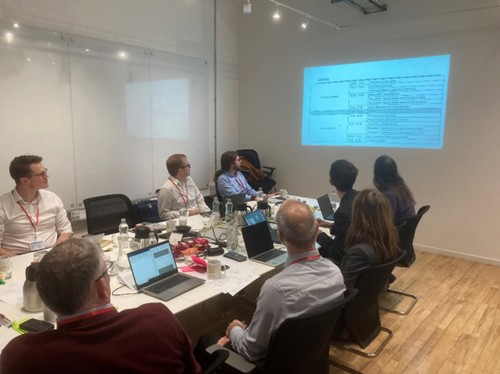The Office for Nuclear Regulation (ONR), the Environment Agency and the Advanced Nuclear Skills and Innovation Campus (ANSIC) recently ran the latest in a series of expert panel meetings on the use of artificial intelligence (AI) in the nuclear sector.
The meeting provided a progress update on the AI sandboxing pilot that ONR and the Environment Agency are currently undertaking with industry.
This project has been made possible by a grant from the £12m Regulators’ Pioneer Fund (RPF), awarded by the Department for Business, Energy & Industrial Strategy (BEIS).
The pilot is exploring how the use of AI could be regulated in a way that realises its potential benefits within the nuclear industry and enables innovation where it is in the interest of society and consistent with safety, security and environmental protection expectations.
Sandboxing offers regulators and industry a safe space to consider potential challenges and solutions, including areas where AI may be safely deployed, or where more work is required.
Last month’s expert panel considered ONR’s goal-setting approach to regulation and concluded that it provided a good framework for regulating innovation.

The panel stressed the importance of considering the regulation of AI within the wider regulatory context to ensure safety, security and environmental protection standards are maintained.
ONR also reported on the completion of sprint workshops run as part of the pilot scheme.
These workshops were attended by representatives from UK nuclear licensees and a support contractor.
They involved a review of mock safety cases for two potential applications of AI to identify key areas of challenge which will be considered further in deep dive sessions this summer.
Daniel Finnigan, an ONR Nuclear Safety Inspector, said: “This has been a fantastic opportunity to test our regulatory arrangements against innovative technologies in an open and collaborative environment.
“We’ve already started to focus in on some of the unique challenges associated with AI deployment in the nuclear industry and I am looking forward to diving deeper into these topics in the next stages.”

Jake Surman, from the Environment Agency, said: “A joint sandbox offers innovators the benefit of a single, joined-up regulatory engagement for innovations of mutual interest.
“The design of ONR and the Environment Agency’s sandboxing pilot fosters an approach where we can work with industry whilst maintaining our regulatory independence.
“The outcomes of the project will inform our future use of sandboxing and contribute to our future regulation of artificial intelligence in the sector.”
Gary Bolton, from the National Nuclear Laboratory, of which ANSIC is a part, said: “It has been hugely satisfying to see the progress made by such a broad range of stakeholders – including nuclear licensees, academics and national laboratories – collaborating with the regulators to trial their sandboxing approach.
“This is an important step in the potential adoption of this innovative technology and is very timely with the wider developments in AI that are being made.”
The AI sandboxing pilot will be completed in August.
More information about ONR’s approach to regulating innovation can be found on our website.
Last November, BEIS awarded ONR a grant via the Regulators’ Pioneer Fund to deliver the sandboxing pilot.
The RPF is a grant-based fund to enable UK regulators and local authorities to help create a regulatory environment that encourages business innovation and investment.
The current £12m round is being delivered by the Department for Science, Innovation and Technology (DSIT).